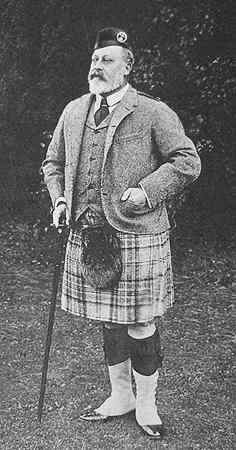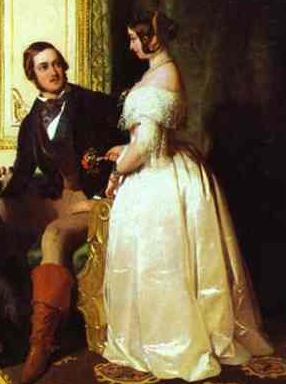
A tie pin (or tiepin, also known as a stick pin/stickpin) is a neckwear-controlling device, originally worn by wealthy English gentlemen to secure the folds of their cravats.

A tie pin (or tiepin, also known as a stick pin/stickpin) is a neckwear-controlling device, originally worn by wealthy English gentlemen to secure the folds of their cravats.
Tie pins were first popularized at the beginning of the 19th century. Cravats were made of silk, satin, lace and lightly starched cambric, lawn cloth, and muslin. Stickpins were necessary accoutrements to keep these expensive fabrics in place and safe. They commonly used pearls and other precious gemstones set in gold or other precious metals and were designed specifically for their owners.
By the 1860s, the English upper middle classes embraced wearing cravats with a consequently lower quality of materials and designs used in both the neckwear and in the stickpins used to keep it in place. By the 1870s, Americans had embraced stickpins and designs were mass-produced which included animal heads, horse shoes, knife and fork motifs, crossed pipes, wishbones, bugs, flowers, shields and a host of other figural motifs. By the 1890s, stickpins had crossed gender lines as women began wearing them with sporting outfits worn for bicycling, boating, horseback riding, tennis, and golf. The ascot, four-in-hand, sailor scarf, cravat bow tie, and wrapped scarf all became popular for both men and women, and all could be set off with an ornamental stickpin.
The temperance campaigner, Carrie Nation partly financed her "hatchetations" from sales of stick pins in the shape of hatchets. [1] The souvenirs were provided by a Topeka, Kansas, pharmacist. Engraved on the handle of the hatchet, the pin reads, "Death to Rum". [2]
Gold or silver style safety pins were commonly used as tie and collar pins from the beginning of the 20th century. Such a safety pin was used to fasten the tie to the shirt and was an integral part of a man's clothing or school uniform, being especially useful on formal occasions or in windy weather. Alternative ways to control unruly ties are available, although an ordinary safety pin inserted through from behind the shirt can invisibly secure the tie without damaging its surface.
During the 1920s the use of straight ties made of delicate materials such as silk became more fashionable and the use of tie clips gained prominence, replacing the more traditional tie pin.
Between 1894 and 1930 many patents were issued covering such issues as prong setting, ornament attachment, stickpin blanks, safety clutches, guards and decorations. One patent was for a brooch which could convert the center medallion to a stickpin. Another concealed a small lead pencil point attached to the shaft of the pin. Still another included a small water reservoir behind the ornamental head of the stick pin in which a flower blossom could be placed. Patent 1,301,568 dated April 22, 1919 was for a luminous stickpin with a star motif disk-like head which held a small drop of radioactive material. [3]

A neckerchief, sometimes called a necker, kerchief or scarf, is a type of neckwear associated with those working or living outdoors, including farm labourers, cowboys and sailors. It is most commonly still seen today in the Scouts, Girl Guides and other similar youth movements. A neckerchief consists of a triangular piece of cloth or a rectangular piece folded into a triangle. The long edge is rolled towards the point, leaving a portion unrolled. The neckerchief is then fastened around the neck with the ends either tied or clasped with a slide or woggle.

A necktie, or simply a tie, is a piece of cloth worn for decorative purposes around the neck, resting under the shirt collar and knotted at the throat, and often draped down the chest.

A waistcoat or vest is a sleeveless upper-body garment. It is usually worn over a dress shirt and necktie and below a coat as a part of most men's formal wear. It is also sported as the third piece in the traditional three-piece male suit. Any given waistcoat can be simple or ornate, or for leisure or luxury. Historically, the waistcoat can be worn either in the place of, or underneath, a larger coat, dependent upon the weather, wearer, and setting.

The bow tie or dicky bow is a type of necktie. A modern bow tie is tied using a common shoelace knot, which is also called the bow knot for that reason. It consists of a ribbon of fabric tied around the collar of a shirt in a symmetrical manner so that the two opposite ends form loops.

The cravat is a neckband, the forerunner of the modern tailored necktie and bow tie, originating from a style worn by members of the 17th century military unit known as the Cravats. The modern British "cravat" is called an "ascot" in American English.

A scarf is a long piece of fabric that is worn on or around the neck, shoulders, or head. A scarf is used for warmth, sun protection, cleanliness, fashion, religious reasons, or to show support for a sports club or team. Scarves can be made from materials including wool, linen, silk, and cotton. It is a common type of neckwear and a perennial accessory.

1860s fashion in European and European-influenced countries is characterized by extremely full-skirted women's fashions relying on crinolines and hoops and the emergence of "alternative fashions" under the influence of the Artistic Dress movement.

Cufflinks are items of jewelry that are used to secure the cuffs of dress shirts. Cufflinks can be manufactured from a variety of different materials, such as glass, stone, leather, metal, precious metal or combinations of these. Securing of the cufflinks is usually achieved via toggles or reverses based on the design of the front section, which can be folded into position. There are also variants with chains or a rigid, bent rear section. The front sections of the cufflinks can be decorated with gemstones, inlays, inset material or enamel and designed in two or three-dimensional forms.

A frock coat is a formal men's coat characterised by a knee-length skirt cut all around the base just above the knee, popular during the Victorian and Edwardian periods (1830s–1910s). It is a fitted, long-sleeved coat with a centre vent at the back and some features unusual in post-Victorian dress. These include the reverse collar and lapels, where the outer edge of the lapel is often cut from a separate piece of cloth from the main body and also a high degree of waist suppression around the waistcoat, where the coat's diameter round the waist is less than round the chest. This is achieved by a high horizontal waist seam with side bodies, which are extra panels of fabric above the waist used to pull in the naturally cylindrical drape. As was usual with all coats in the 19th century, shoulder padding was rare or minimal.

Morning dress, also known as formal day dress, is the formal Western dress code for day attire, consisting chiefly of a morning coat, waistcoat, and formal trousers for men, and an appropriate gown for women. Men may also wear a popular variant, where all parts are the same colour and material, often grey, and usually called "morning suit" or "morning grey" to distinguish it; considered properly appropriate only to festive functions, such as summer weddings and horse races, which consequently makes it slightly less formal. The correct hat would be a formal top hat, or if on less spacious audience settings, optionally a collapsible equivalent opera hat.

Highland dress is the traditional, regional dress of the Highlands and Isles of Scotland. It is often characterised by tartan. Specific designs of shirt, jacket, bodice and headwear may also be worn. On rare occasions with clan badges and other devices indicating family and heritage.

An ascot tie or ascot is a neckband with wide pointed wings, traditionally made of pale grey patterned silk. This wide tie is usually patterned, folded over, and fastened with a tie pin or tie clip. It is usually reserved for formal wear with morning dress for daytime weddings and worn with a cutaway morning coat and striped grey formal trousers. This type of dress cravat is made of a thicker, woven type of silk similar to a modern tie and is traditionally either grey or black. A more casual form of ascot is in British English called a cravat, or sometimes as a day cravat to distinguish it from the formal ascot or dress cravat. The casual form is made from a thinner woven silk that is more comfortable when worn against the skin, often with ornate and colourful printed patterns.

1840s fashion in European and European-influenced clothing is characterized by a narrow, natural shoulder line following the exaggerated puffed sleeves of the later 1820s and 1830s. The narrower shoulder was accompanied by a lower waistline for both men and women.

A stock tie, or stock, is a style of neck wear. Originally a form of neck-cloth that was often stiffened and usually close-fitting, formerly worn by men generally, but post-nineteenth century only in use in military uniforms. Another type of stock is worn by certain clergy and consists of black silk or other fabric, that falls over the chest and is secured by a band around the neck. Equestrians wear a stock tie around the neck when dressed formally for a hunt or certain competitive events. Most equestrian competition rules require it to be white. It is mandated attire for use in dressage and the dressage phase of eventing. Use of the stock tie also is seen in show jumping and fox hunting. The stock tie continues to be in fashion for equestrians.

Bands are a form of formal neckwear, worn by some clergy and lawyers, and with some forms of academic dress. They take the form of two oblong pieces of cloth, usually though not invariably white, which are tied to the neck. When worn by clergy, they typically are attached to a clerical collar. The word bands is usually plural because they require two similar parts and did not come as one piece of cloth. Those worn by clergy are often called preaching bands or Geneva bands; those worn by lawyers are called barrister's bands or, more usually in Ireland and Canada, tabs.

A lapel pin, also known as an enamel pin, is a small pin worn on clothing, often on the lapel of a jacket, attached to a bag, or displayed on a piece of fabric. Lapel pins can be ornamental or can indicate the wearer's affiliation with a cause or an organization, such as a fraternal order or religious order; in the case of a chivalric order, the lapel pin is in the form of a rosette. Before the popularity of wearing lapel pins, boutonnières were worn.

Mekhela Sador is a traditional attire worn by women from Assam. Mekhela Sador is two-piece attire, the Mekhela and the Sador, and is generally made from silk such as Muga silk, Eri or Pat silk.

Croatian national costume, also called as Croatian traditional clothing or Croatian dress, refers to the traditional clothing worn by Croats living in Croatia, Bosnia and Herzegovina, Serbia, with smaller communities in Hungary, Austria, Montenegro, and Romania. Since today Croats wear Western-style clothing on a daily basis, the national costumes are most often worn with connection to special events and celebrations, mostly at ethnic festivals, religious holidays, weddings, and by dancing groups who dance the traditional Croatian kolo, or circle dance.
Countess Mara, founded in 1935 by Lucilla Mara de Vescovi, was an Italian menswear fashion label specialising in high-end pictorial neckties. The brand has been owned by Randa Accessories since 1998.

Traditional clothing is one of the factors that has differentiated Kosovo from neighboring countries, dating back as far as the Illyrian era.